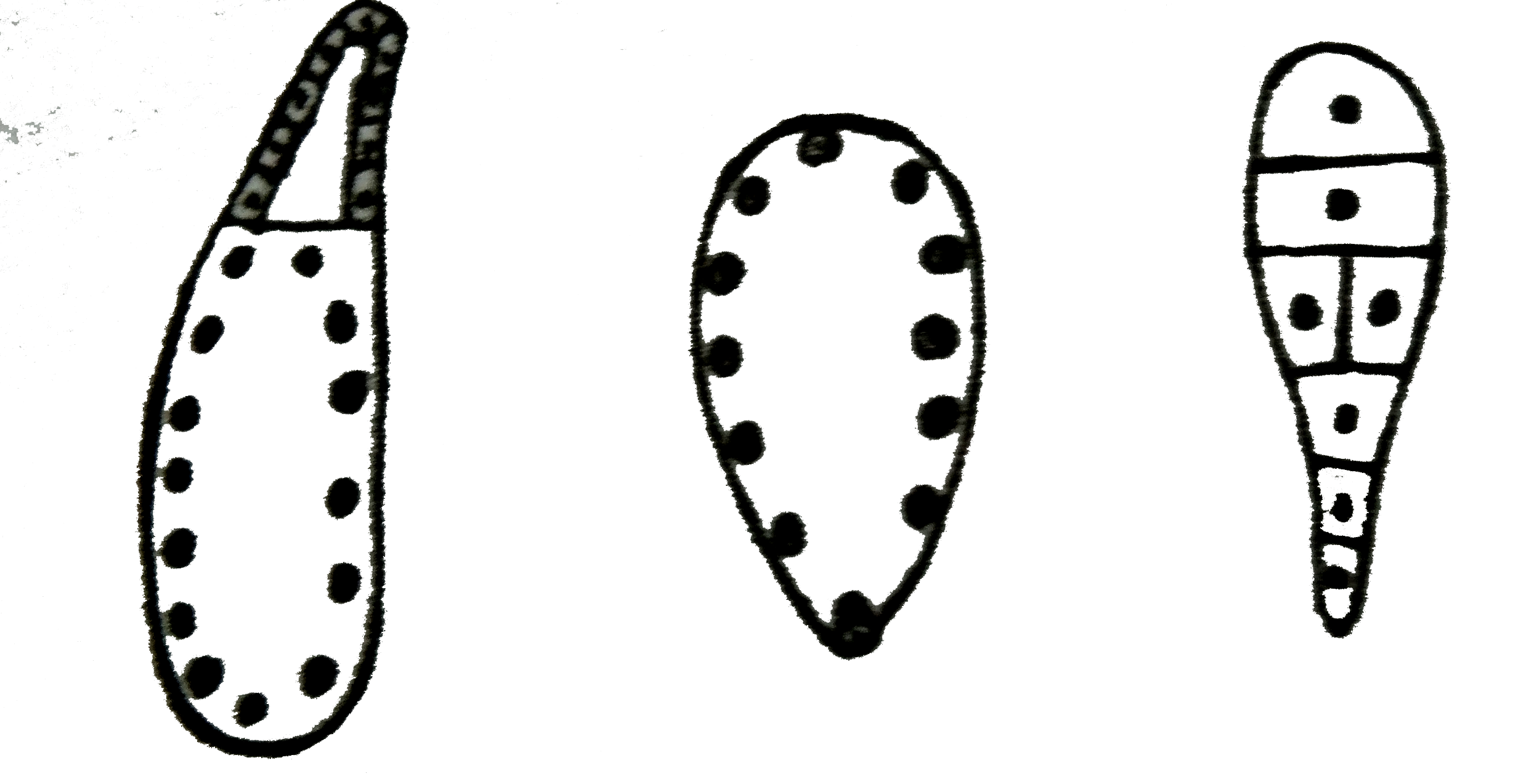Select the correct order(s).
HOCl>HOBr>HOI-Acid strength
HCIO4<HCIO3<HCIO2≤HCIO-oxidising power
CIO−4<BrO−4<IO−4-oxidising power
IO−>BrO−>CIO− -ease of disproportionation.
The correct Answer is:ABD
To solve the question of selecting the correct order(s) related to acidic strength, oxidizing power, and ease of disproportionation for the given compounds, we can break down the analysis into several steps.
1. Analyzing Acidic Strength:
- The compounds to compare are HOCl, HOBr, and HOI.
- Remove the H⁺ ion and analyze the remaining anions: OCl⁻, OBr⁻, and OI⁻.
- Stability of these anions is determined by the electronegativity of the central atom (Cl, Br, I).
- The order of stability is OCl⁻ > OBr⁻ > OI⁻, which means the acidic strength order is HOCl > HOBr > HOI.
- Conclusion: The first option is correct.
2. Comparing Oxidizing Power of HClO3, HClO2, HClO, and HCl:
- Calculate the oxidation states:
- HClO3: +7
- HClO2: +5
- HClO: +3
- HCl: +1
- As the oxidation number decreases from HClO3 to HCl, the oxidizing power decreases.
- Therefore, the order of oxidizing power is HClO3 > HClO2 > HClO > HCl.
- Conclusion: The second option is correct.
3. Comparing Oxidizing Power of ClO4⁻, BrO4⁻, and IO4⁻:
- All have the same oxidation state (+7).
- Compare the central atoms: Cl, Br, and I.
- Chlorine is the most electronegative, followed by bromine and iodine.
- However, BrO4⁻ can oxidize better than ClO4⁻ due to its unique properties.
- Therefore, the order is BrO4⁻ > ClO4⁻ > IO4⁻.
- Conclusion: The third option is incorrect.
4. Ease of Disproportionation of IO⁻, BrO⁻, and ClO⁻:
- Analyze the ability of each species to disproportionate.
- ClO⁻ can easily transition between oxidation states due to its small size and high electronegativity.
- BrO⁻ can also disproportionate but with less ease than ClO⁻.
- IO⁻ has the least tendency to disproportionate due to its larger size and lower electronegativity.
- Thus, the order is ClO⁻ > BrO⁻ > IO⁻.
- Conclusion: The fourth option is correct.
Final Summary:
- The correct orders are:
1. Acidic strength: HOCl > HOBr > HOI (Correct)
2. Oxidizing power: HClO3 > HClO2 > HClO > HCl (Correct)
3. Oxidizing power: BrO4⁻ > ClO4⁻ > IO4⁻ (Incorrect)
4. Ease of disproportionation: ClO⁻ > BrO⁻ > IO⁻ (Correct)
- The compounds to compare are HOCl, HOBr, and HOI.
- Remove the H⁺ ion and analyze the remaining anions: OCl⁻, OBr⁻, and OI⁻.
- Stability of these anions is determined by the electronegativity of the central atom (Cl, Br, I).
- The order of stability is OCl⁻ > OBr⁻ > OI⁻, which means the acidic strength order is HOCl > HOBr > HOI.
- Conclusion: The first option is correct.
- Calculate the oxidation states:
- HClO3: +7
- HClO2: +5
- HClO: +3
- HCl: +1
- As the oxidation number decreases from HClO3 to HCl, the oxidizing power decreases.
- Therefore, the order of oxidizing power is HClO3 > HClO2 > HClO > HCl.
- Conclusion: The second option is correct.
- All have the same oxidation state (+7).
- Compare the central atoms: Cl, Br, and I.
- Chlorine is the most electronegative, followed by bromine and iodine.
- However, BrO4⁻ can oxidize better than ClO4⁻ due to its unique properties.
- Therefore, the order is BrO4⁻ > ClO4⁻ > IO4⁻.
- Conclusion: The third option is incorrect.
- Analyze the ability of each species to disproportionate.
- ClO⁻ can easily transition between oxidation states due to its small size and high electronegativity.
- BrO⁻ can also disproportionate but with less ease than ClO⁻.
- IO⁻ has the least tendency to disproportionate due to its larger size and lower electronegativity.
- Thus, the order is ClO⁻ > BrO⁻ > IO⁻.
- Conclusion: The fourth option is correct.
- The correct orders are:
1. Acidic strength: HOCl > HOBr > HOI (Correct)
2. Oxidizing power: HClO3 > HClO2 > HClO > HCl (Correct)
3. Oxidizing power: BrO4⁻ > ClO4⁻ > IO4⁻ (Incorrect)
4. Ease of disproportionation: ClO⁻ > BrO⁻ > IO⁻ (Correct)
Topper's Solved these Questions
- P BLOCK ELEMENTSBOOK - RESONANCE ENGLISHCHAPTER - P BLOCK ELEMENTSEXERCISE - PART -II
23 Videos
- P BLOCK ELEMENTSBOOK - RESONANCE ENGLISHCHAPTER - P BLOCK ELEMENTSEXERCISE - Exercise 3 part-3
28 Videos
- NUCLEAR CHEMISTRYBOOK - RESONANCE ENGLISHCHAPTER - NUCLEAR CHEMISTRYEXERCISE - STAGE-II
1 Videos
- P-BLOCK ELEMENT (BORON AND CARBON FAMILY)BOOK - RESONANCE ENGLISHCHAPTER - P-BLOCK ELEMENT (BORON AND CARBON FAMILY)EXERCISE - PART - III : OLYMPIAD PROBLEMS (PREVIOUS YEARS) STAGE - V (INTERNATIONAL CHEMISTRY OLYMPIAD (IChO)) Problem 3
8 Videos
Similar Questions
Knowledge Check
Select the correct order of basicity.
ACH3CH−2>CH2=CH−>HC≡C−>OH−BCH3CH−2>HC≡C−>CH2=CH−>OH−CCH3CH−2>OH−>HC≡C−>CH2=CH−DOH−>HC≡C−>CH2=CH−CH3CH−2
Select the correct order of endosperm types.

View SolutionSelect the correct order of following property .
View SolutionSelect the correct order of acidic strength.
View SolutionSelect the correct order of heat of hydrogenation?

View SolutionSelect the correct order of phyla on the basis of the number of species.
View SolutionSelect the correct order of periodic properties of species :
View SolutionSelect the correct order of first ionisation potential
View Solution
